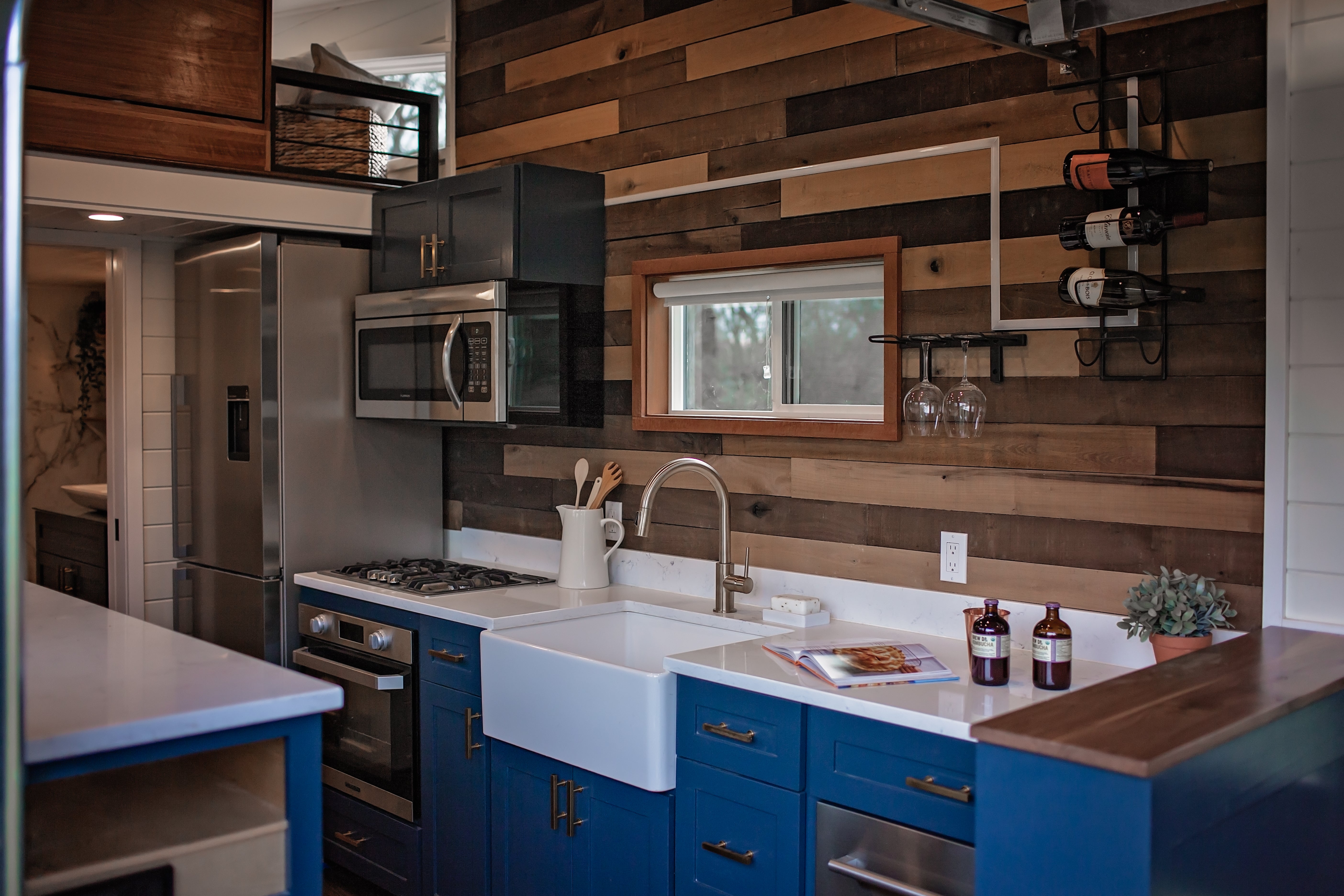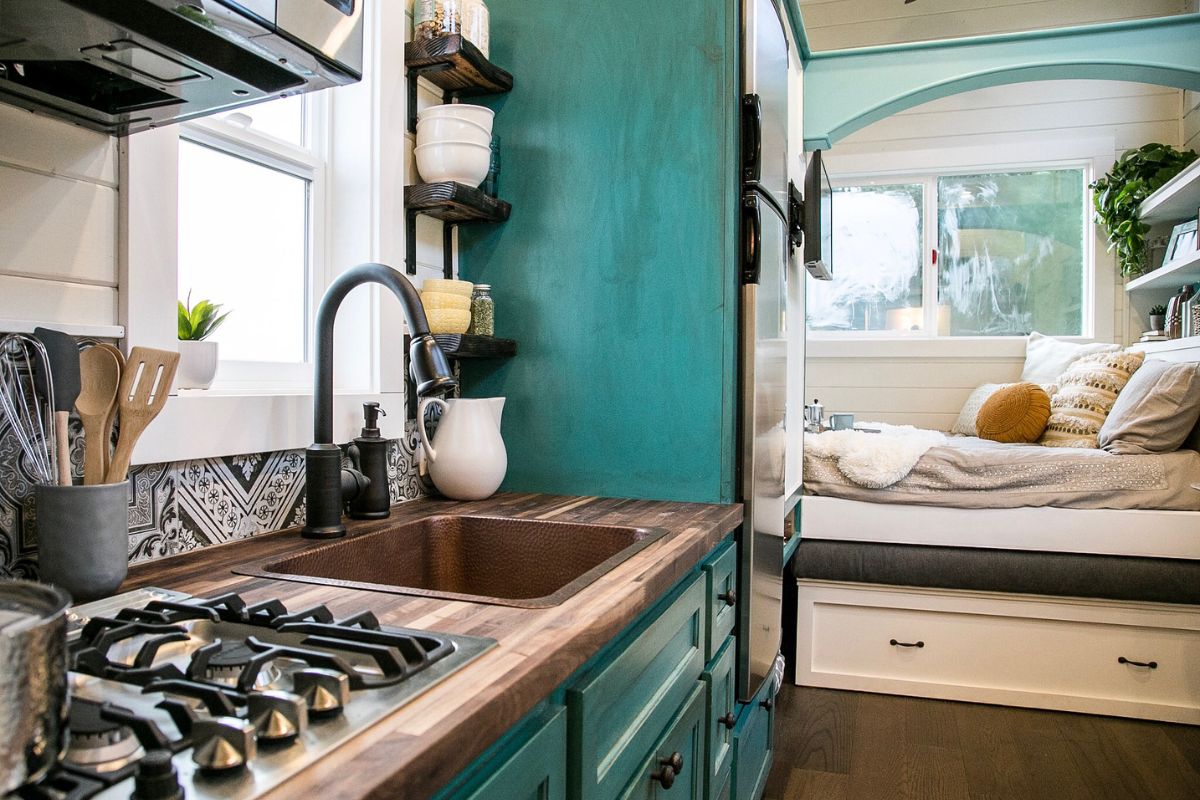Keeping the kitchen organised at all times can be pretty challenging, especially when managing a full-time job and a family altogether. In many cases, we own too many appliances, tableware, or decorations in the kitchen that make it challenging to maintain the space neatly.
However, many kitchen items make our lives easier by minimising cooking time or making cleaning more efficient. So, the solution is to equip the kitchen with structured storage space that first considers the room size and your needs as well.
The easiest way to benefit from well-organised storage is to look for different designs of kitchen units that are both practical and within your budget. Let’s discover what would help you keep your kitchen under control.

Base units
Kitchen base units are essential in every kitchen as they provide deep storage space and enough surface for the worktop or sink. Variations of base units help homeowners personalise them based on space, and they usually come in products for every budget, which you can find on kitchenwarehouseltd.com.
Baseline units, drawer line units, and internal drawer units are common types of kitchen units, as they offer enough space and customisation for objects of various sizes and weights. However, there are many other options to consider for extra kitchen organisation.
Specific units
These specific units answer your needs by making cooking faster and more efficient. For example:
-
A wire basket stores kitchen utensils and cutlery;
-
An oil pull-out is perfect for spices, oils, or other similar cooking essentials;
-
A swing larder is made for storing dry foods;
-
A magic corner unit is suitable for L-corners where pans and pots can be stored;
-
A D and S carousel is great for items you use rarely;
-
A wicker basket is made for perishable items;
-
An appliance garage keeps appliances like the grinder or oven in the same place;
Tall units
Tall units have their own place on the list, as they’ve become more popular lately. They’re efficient in high kitchens, especially when personalised to touch the ceiling. This is an essential feature as it’s one less place to dust, and it provides more storage for less-used items.
Tall units can also receive personalised features that include flexible racks or pull-out trays, so you can easily access anything from a simple swing. These units can also become the centrepiece of the kitchen by having an open wine rack or become highly used by consisting of a janitor unit with all the cleaning necessities. Their personalisation features make them ideal for any type of kitchen.
Wall units
Wall units also offer extra storage space in the kitchen and are great for small kitchens, where overall space is scarce. Of course, they’re best for not-too-heavy items that still take up a lot of space, such as cooking utensils or dinnerware.
Wall units can be:
-
Top box units that run along the top of another unit and usually consist of an open unit;
-
Glazed units that have their door replaced with glazing where you can place decorative sets;
-
Corner or diagonal wallets are suitable for specific room spaces;
Mixing wall units with base and specific units should provide you with the appropriate storage for keeping all kitchen essentials in a spotless order. However, you must also practice your organisation skills.

How to keep storage neat at all times
Everyone dreams of having a clean and well-organized kitchen, but it can sometimes get out of control. While it is acceptable for it to happen from time to time, having a messy kitchen continuously will damage your mental health. Clutter can intensify feelings of confusion and tension, so it’s best to create a realistic system for keeping things organized.
For example, since you’ve got so many storage options, assign items to a home based on categories. Appliances, certain types of foods, and cutlery should all be in the same place. It could also be helpful to place the items you use daily closer to the cooking area.
Using containers to arrange objects together also minimises visual clutter and makes it easy to grab things, such as spices or ingredients of the same type. In addition, a holding station for regularly used items will keep things tidy when cooking, cleaning, or dining. For example, this applies best to a coffee station, where you keep the coffee maker, cups, sugar, and other necessities in the same place.

Dedicate time for cleaning
Depending on how much you cook daily and the number of family members, you might need to spend more or less time cleaning the kitchen. However, dedicating specific time to cleaning will do wonders, rather than tidying intermittently.
For example, you could set a timer for 30 minutes in the evening to wipe down surfaces, run the dishwasher, and sweep the floor. A checklist can also help achieve more in less time, making the cleaning at the end of the week less demanding.
A weekly kitchen cleaning checklist includes:
-
Taking inventory of leftovers;
-
Cleaning outside the appliances;
-
Cleaning the inside of the microwave and the refrigerator;
-
Deep-cleaning the sink and disinfecting faucets;
-
Cleaning the garbage disposal;
There are also things you might need to do monthly:
-
Taking inventory of the freezer;
-
Dusting the tops of the cabinets and refrigerator;
-
Cleaning tile grout;
-
Cleaning and descaling the coffee maker;
Finally, seasonal kitchen cleaning includes:
-
Vacuuming crumbs out of drawers;
-
Cleaning under the refrigerator;
-
Organising the pantry;
-
Taking inventory of expired food items;
Final take
The kitchen can get quite messy if we let it get out of control, even for a few days. This can happen more often if the kitchen is not equipped with the right storage spaces that fit the space, which is why choosing varied kitchen units is important. Tall units, wall units, and specific units for multiple use-cases are essential for helping you keep things neat and organised as often as possible. Of course, you need to create a weekly and seasonal cleaning plan to maintain the kitchen in good condition.






Share: